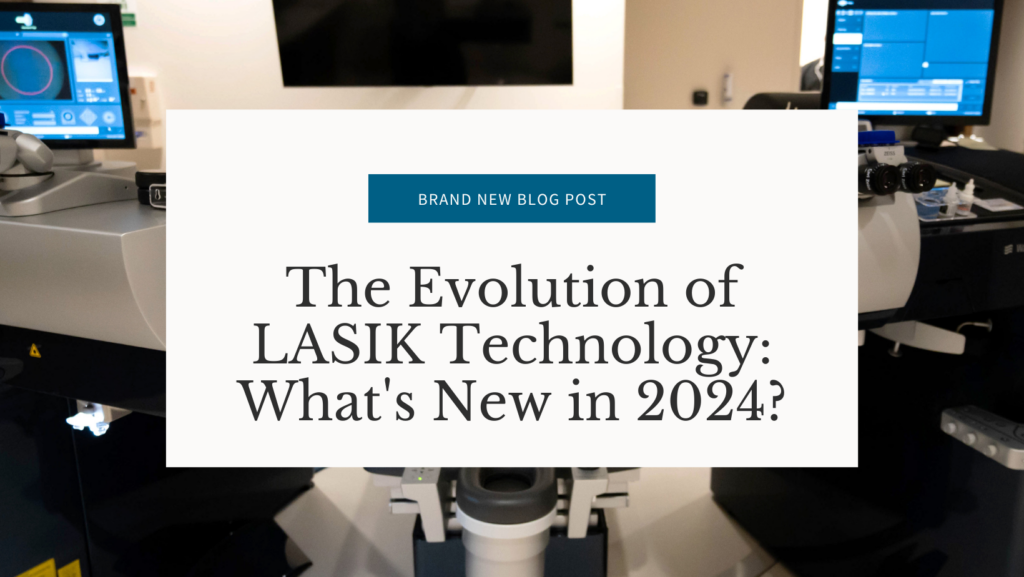
LASIK, short for Laser-Assisted In Situ Keratomileusis, has long been regarded as a transformative solution for vision correction. Over the years, advancements in technology have continuously refined LASIK procedures, making them more precise, safer, and capable of addressing a wider range of visual impairments.
Leading the way in this field is Dr. Stephen Welxer, a highly accomplished LASIK doctor with an extensive background in LASIK surgery. Driven by his dedication to this field, he began his journey in the late 1990s when LASIK emerged as a revolutionary procedure. Since then, LASIK outcomes have significantly improved over the past two decades, primarily owing to advancements in laser technology.

Stephen A. Wexler, MD
Professor of Ophthalmology and Visual Sciences
- Email: swexler@nospam.wustl.edu
Medical Director Washington University LASIK Surgery Center
Traditionally, LASIK flap creation involved the use of a microkeratome blade. However, Dr. Welxer’s pioneering spirit and unwavering commitment to safety led him to adopt femtosecond laser technology in 2005. As the first in St. Louis to utilize this innovative method, he eliminated the need for a blade, elevating both the outcomes and safety of LASIK procedures.
At the core of LASIK is the excimer laser, responsible for reshaping the cornea to provide vision correction. Dr. Welxer’s expertise has allowed him to witness significant progress in laser ablation techniques over the years. From rudimentary laser ablation to the current topography-driven ablation, tremendous advancements have reshaped the field. The result is improved visual outcomes for patients and a significant reduction in the need for touch-up surgeries or enhancements. Dr. Stephen Welxer’s unwavering dedication to pushing the boundaries of LASIK surgery has undeniably enhanced the lives of countless individuals seeking optimal vision without the reliance on glasses.
Latest Innovations and Advancements in LASIK
As we embark on 2024, let us delve into the latest innovations and advancements in LASIK technology that are revolutionizing the field of vision correction.
Femtosecond Laser Technology
One of the significant strides in LASIK procedures is the use of femtosecond lasers for creating the corneal flap during surgery. These ultrafast lasers offer a level of precision and safety that surpasses the traditional microkeratome blade, reducing the risk of complications and enhancing the overall surgical experience. This technology enables surgeons to create corneal flaps with incredible accuracy, contributing to better visual outcomes for patients.
Wavefront-Guided and Topography-Guided LASIK
Wavefront-guided and topography-guided LASIK are advanced techniques that provide highly customized treatments. Wavefront-guided technology maps the eye’s unique irregularities and guides the laser to correct specific imperfections, addressing higher-order aberrations for more precise vision correction. Topography-guided LASIK uses corneal topography to create a highly personalized treatment plan, further enhancing visual outcomes and reducing side effects like glare or halos.
Smart LASIK Systems
The integration of artificial intelligence (AI) and machine learning in LASIK technology has given rise to smart LASIK systems. These systems use AI algorithms to analyze vast amounts of patient data, aiding surgeons in making more precise treatment plans and predicting post-operative outcomes. By improving the accuracy of diagnostics and treatment, smart LASIK systems contribute to higher success rates and improved patient satisfaction.
Enhanced Eye-Tracking Technology
Eye-tracking systems have also undergone significant improvements. The latest advancements in eye-tracking technology allow for real-time adjustments during the surgery, compensating for any subtle eye movements. This ensures that the laser remains precisely aligned, enhancing the accuracy and safety of the procedure.
Less-Invasive LASIK Alternatives
For individuals who might be hesitant about traditional LASIK surgery, less invasive alternatives are viable options. Advanced surface ablation techniques, such as PRK (Photorefractive Keratectomy), offer vision correction without creating a corneal flap, appealing to those concerned about flap-related complications.
The Evolution Continues
The evolution of LASIK technology continues to revolutionize the field of vision correction, offering safer, more precise, and personalized treatments for a wider range of patients. The innovations in 2024 emphasize enhanced accuracy, reduced recovery times, and expanded treatment options, catering to the diverse needs of individuals seeking improved vision.
While these advancements represent great strides in LASIK technology, it’s important for individuals considering vision correction procedures to consult with experienced Optometrist, like Dr. Eric Polk.

Eric Polk, OD, FAAO
Staff Optometrist, Ophthalmology and Visual Sciences
- Email: polk@nospam.wustl.edu
Dr. Polk can provide personalized recommendations and guidance based on individual eye health and specific visual needs. The ongoing evolution of LASIK technology signifies a brighter and clearer future for individuals seeking a life free from dependence on glasses or contact lenses.
For an appointment, please call 855-735-2745 or schedule online. To learn more, visit LASIK Vision Surgery.